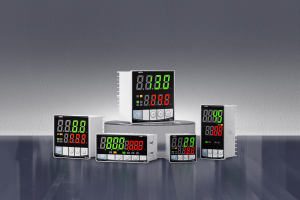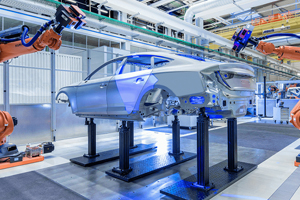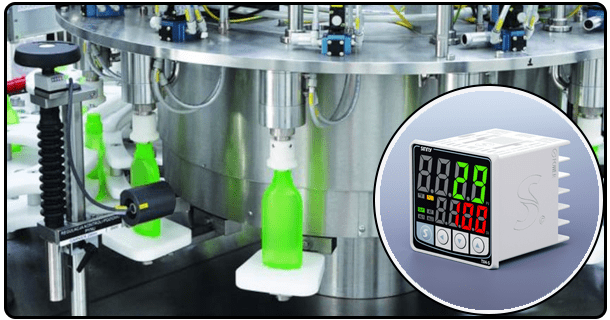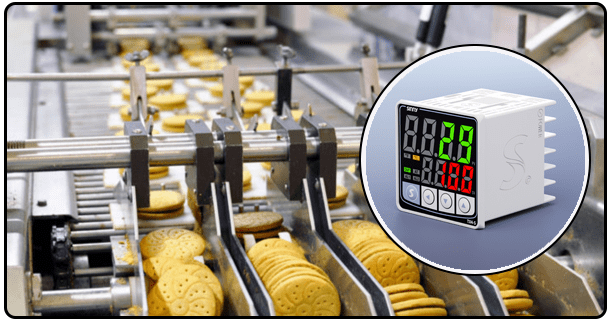Understanding Dual Loop PID Temperature Controllers: Advanced Control for Complex Systems
Explore how Dual Loop PID Temperature Controllers work. Learn about their structure, advantages, and key applications in industrial and HVAC settings. Understand the benefits over single-loop systems for precise, stable control.
1. Introduce: the Need for Advanced Temperature Control
In countless scientific, industrial and commercial processes, temperature regulation is essential. It is important to maintain precise temperatures in order to ensure product quality, efficiency of processes, safety and, often, optimal performance. For decades, the Proportional-Integral-Derivative (PID) controller has been the cornerstone technology for achieving this control. Standard PID controllers are effective when there is only one primary variable that needs to be controlled, like the temperature in a tank, or the motor speed. Many real-world system are more complex and involve multiple variables or processes. A single PID circuit is often insufficient in these situations, which can lead to instabilities, difficulties in reaching desired performance or inability to effectively control all variables. In these scenarios, a dual-loop PID controller is essential. The purpose of this article is to explain what a PID dual-loop controller does, how it works, the advantages it offers, and which applications it excels in. Understanding this sophisticated control strategy will help you appreciate how complex thermal systems are managed reliably and accurately.
2. The Foundation of Basic PID Control
It is important to understand the basic principles of PID as they are applied in single loop systems before diving into dual looping. PID control works on the simple principle of negative feedback. The PID controller continuously monitors the process variables (like temperature) by using sensors. The measured value is compared with a setpoint, or target temperature. Error is the difference between two values. PID calculates the output signal using three terms that are derived from error over time.
Proportional (P), Term: It generates an output proportional to current error. The proportional term can make a significant correction if the temperature difference between the setpoint and the actual temperature differs significantly. The proportional term increases as the error is reduced. P-terms help to quickly bring the variable process closer to its setpoint.
Integral term (I): Addresses the accumulation of error in time. The integral term increases (or decreases) continuously if the error continues for any length of time. This adds (or subtracts from) the output. The steady state error is eliminated by ensuring the variable settles at its setpoint even when the process exhibits a delay or offset.
Derivative term (D): Predicts future error based on rate of change in current error. The derivative term can dampen response if the error increases rapidly. This will prevent overshoot, and help the system achieve stability. If the error decreases quickly, the derivative term can act as a boost for the convergence.
Combining these terms allows the PID to generate a signal which drives the process variables towards the setpoint on a stable and controlled basis. Single-loop PID controls are therefore highly efficient for many temperature control tasks. Their effectiveness can be limited if the process has multiple variables that are interdependent or a primary variable which is influenced significantly by auxiliary processes. In this scenario, a dual-loop approach becomes necessary.
3. Dual Loop PID Control Concept: Management of Interdependencies
Dual loop PID controllers extend the PID principle by adding a secondary control loop which interacts with primary loop. The structure allows the control of multiple related variables or the management of primary processes where an auxiliary factor plays a crucial role in the behaviour of the primary variable. It is the core concept to develop a system that refines control actions and improves overall performance and stability.
Dual loop systems typically consist of two control loops.
Primary Loop: In this loop, you control the primary process variable. This is what the goal of your overall strategy should be (e.g. the temperature of the reactor jacket, or air temperature within a large zone in the building).
Secondary Loop: Addresses an auxiliary variable in the process or one that has a significant impact on performance of primary loop. The secondary loop acts as an assistant loop by ensuring the desired level of the auxiliary variables is kept. This helps the primary loop achieve its goal more efficiently. It is used to influence the primary loop by using the output of the secondary circuit.
It is important to understand the interaction between loops. Primary loop controllers calculate the required control actions based on primary process variables' error (the differences between their setpoint and measurements). Its effectiveness may be reduced if secondary process variables are not properly managed. In a system that controls the temperature in a chemical reactor vessel, for example, the primary circuit might be used to control the heating or cooling jackets around the vessel. The temperature of heating fluid or cooling liquid entering the jacket could be controlled by the secondary loop. The primary loop will be able to regulate the temperature of the reaction vessel more accurately and effectively by ensuring that the fluid temperature can be precisely controlled. Dual loop controllers aim to optimize control by simultaneously managing the primary objective as well as the key influencing factors. Dual loop controllers are commonly configured as cascade controls, in which the secondary control loop influences the primary control loop's setpoint, or feedforward controls, whereby the secondary control loop takes additional action on the basis of known influences of an auxiliary variable.
4. How Dual Loop PID Controls Work: The Mechanism
To understand the operation of a PID dual-loop controller, it is necessary to examine its architecture as well as the actions that are performed within each loop. The specific implementation may vary based on the hardware and application (e.g. using multiple controllers or a single processor that has multiple channels of input/output), but the basic principles are the same.
The system is typically composed of sensors that measure the primary process variable and the secondary, actuators for the control action, and controllers (or multiple controllers), which perform PID calculations, manage loops, and execute the PID calculation. It is important to communicate between loops. This communication can be direct in a cascade setup: The output from the secondary controller is the setpoint of the primary controller.
This is a detailed breakdown on how to operate a dual-loop system, using an example previously given of the temperature of a jacket of a nuclear reactor controlled by a temperature control loop.
Operation of Primary Loop: This primary loop sensor is used to measure the temperature in the jacket. The actual temperature of the reactor jacket is measured and compared with a desired setpoint. This comparison is used by the PID primary loop controller to calculate an error and determines the control action required for the primary actuator.
Secondary loop operation: The secondary loop sensor simultaneously measures the temperature entering the jacket of the fluid (the second process variable). The secondary setpoint can be either fixed or adjusted dynamically. This controller determines an error, and then the control action required to keep the fluid temperature setpoint. This is usually directed towards the secondary actuator.
It is important to understand how secondary loop action affects the primary loop. The output from the secondary loop (which is the fluid temperature, or the flow rate desired) will be sent to the input for the primary loop. The primary loop controller does not only react to the temperature of the reactor jacket; it also strives to reach the conditions calculated by secondary loop in order to better achieve its setpoint. In effect, the primary loop "uses" secondary loop output to determine its own strategy.
Both loops provide feedback. In the primary loop, feedback is provided on the process in question. The secondary loop gives feedback on an auxiliary variable. The system can respond to disruptions more efficiently and keep both variables under control with this continuous monitoring.
Consider an example of a sophisticated HVAC system installed in a big building. A primary loop could control the temperature of a certain zone. The secondary loop can control the temperature in the coils that heat and cool the zone. The primary loop, by precisely controlling the temperature of the water (secondary circuit), can better regulate zone air temperatures and improve comfort.
5. Benefits of Dual Loop PID control: Improved Performance
Implementing a PID dual-loop strategy has several advantages, especially when it comes to complex processes. The ability to better manage variables and interactions is the key factor in these benefits.
Stability and response improved: Enhanced system stability is one of the main advantages. Controlling interacting variables individually and making sure they are operating within the desired ranges will reduce the likelihood of an unstable system. Dual looping also allows for a more rapid and stable response when setpoints are changed or there is a disturbance. Secondary loops can compensate for any changes and allow the primary loop to concentrate on making the final adjustments.
Improved Precise control: Dual-loop systems provide more accurate control over both primary and secondary variables. Secondary loops ensure that the secondary process variables (such as fluid temperature or sensor calibrations) are maintained at optimal levels. This directly helps the primary loop achieve its target setpoint and maintain it. The result is improved process quality and performance.
Improved system flexibility and robustness: Dual loop designs make the control systems more flexible to changing process conditions. The secondary loop is often able to compensate for changes in the relationship between primary and secondary variables (due to wear and tears, differences in operating modes or seasonal variation). This maintains the overall performance of the system. The system becomes more resilient and is less susceptible to changes in process.
Less Steady State Error: Integral action in the loops combined with their interaction can eliminate steady state error more effectively than a single-loop. The primary process will be less likely to deviate from the setpoint with time if the auxiliary variables are managed precisely.
Improved Handling of Complex Processes Dual Loop Control is best suited to processes with inherent complexity, including those that involve delays, interplay between subsystems or multiple inputs impacting the same output. This approach provides a sophisticated way to manage these complex processes compared with a simple single-loop system.
Dual loop PID controllers are indispensable for many industrial and technical applications that require precise, reliable, and stable temperature control.
6. Dual Loop PID controllers excel in certain applications.
Dual loop PIDs are suited to a variety of industries due to their sophisticated control abilities. They are particularly useful in managing interdependent, complex processes. Dual loop PID controllers can be found in a variety of applications.
Chemical and Petrochemical Industries For reaction efficiency, product safety and quality, temperature regulation is crucial in these industries. Dual loop controllers can be used for heat exchangers, reactors and distillation columns. Dual loop systems can control both the heating fluid that enters an exchanger and the heat or cool fluid within the exchanger. A second example involves managing the temperatures of catalysts during chemical reactions. The temperature of the feedstock is regulated (secondary circuit) to achieve optimal performance of the catalyst, and this in turn influences the primary loop temperature.
Building Climate Control and HVAC: Many modern heating, ventilation and air-conditioning systems use dual loop controls to optimize performance and efficiency. Cascade control is a common method for controlling large HVAC systems that serve multiple zones. Primary loops might be used to control air temperatures in large areas of a building. The secondary loop can control the water temperature for the cooling or heating of air-conditioning units in that building. The primary loop is able to regulate zone temperature more efficiently and effectively by precisely controlling the water supply temperature.
Energy Generation: Dual loop PID controllers in power plants are used to manage various thermal processes. They could, for example, control the temperature in boilers or cooling water. For efficient operation, to prevent equipment damage and maintain safety margins, precise temperature control is vital.
Pharmaceutical Manufacturing and Food Processing: Both industries need to control temperatures in processes such as heating, cooling and sterilization. This is necessary for product quality and safety. Dual loop systems are able to manage variables such as the temperature in the jackets for heating and cooling, the process fluid temperature, or the product stream temperature within the reactors or drying chambers.
Lab Equipment: Incubators, reaction vessels, and environmental chambers used for research and development are often controlled by dual-loop PID to maintain highly precise and stable temperatures. This is crucial when performing experiments that require exact conditions.
Dual loop PID controls are suitable for applications where temperature regulation is affected by an additional temperature parameter or variable, or when the temperature goal must be controlled precisely.
7. Dual Loop PID Systems: Design and Implementation Key Considerations
To design and implement a successful dual-loop PID system, you need to be meticulous in your tuning, understand the dynamics of the processes, and plan carefully. This is more complicated than designing a simple system. There are several key issues to be considered:























